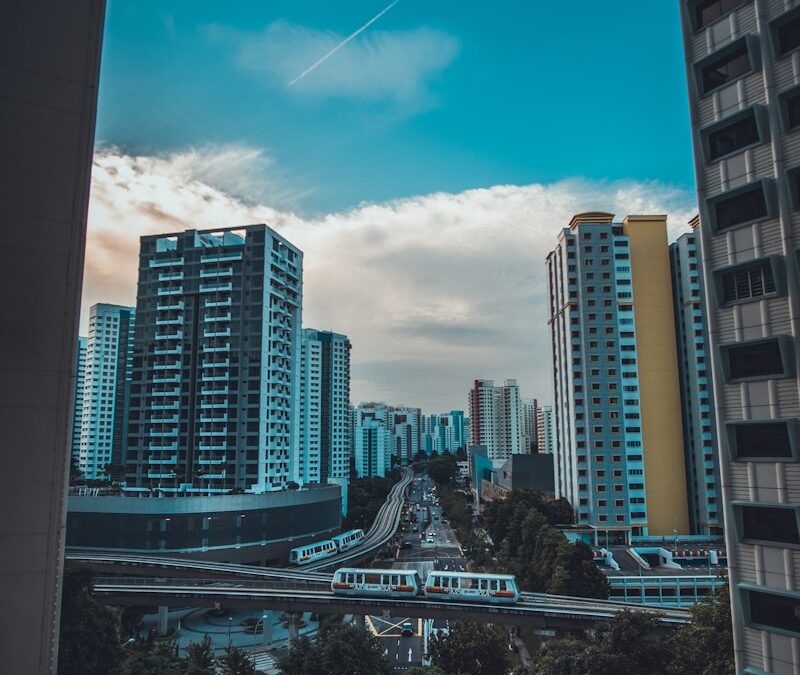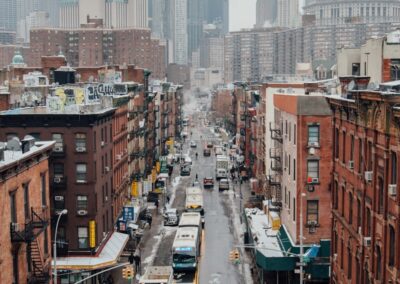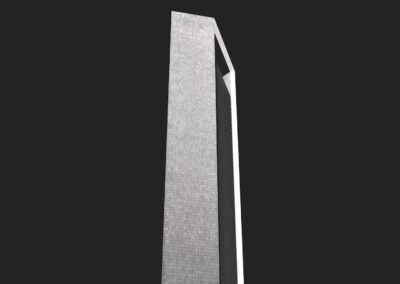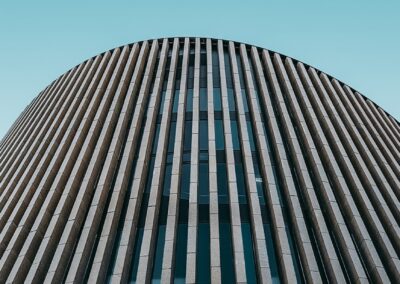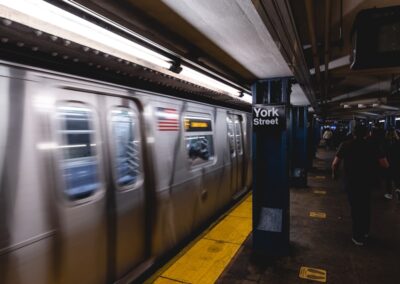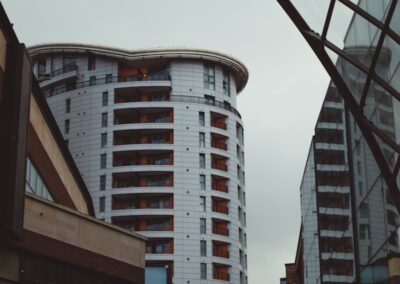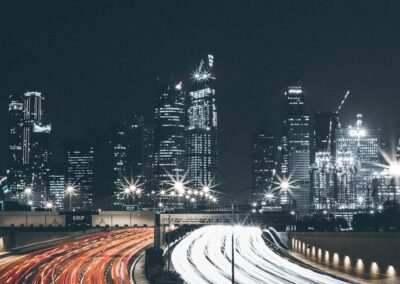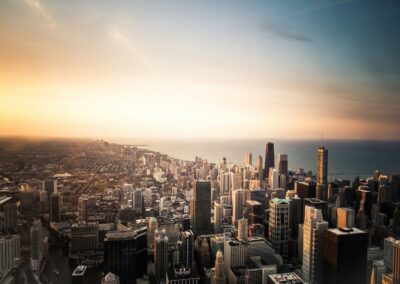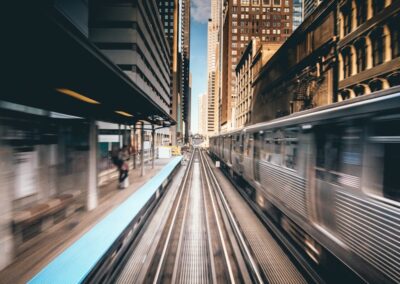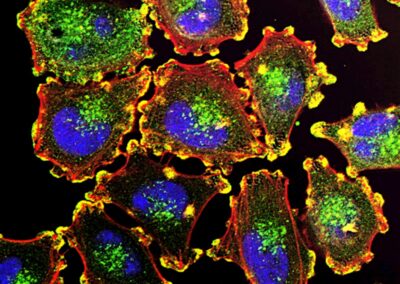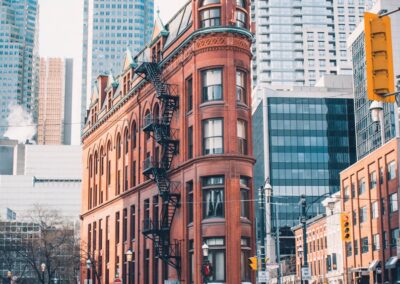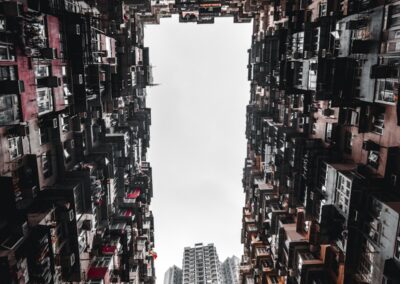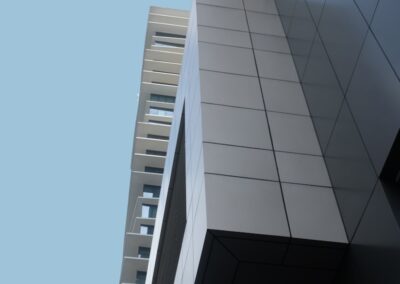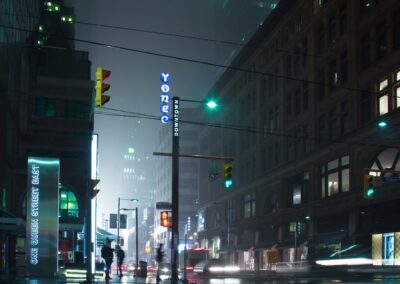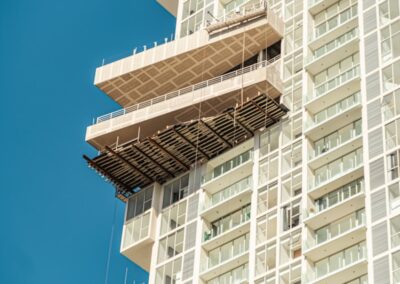Inclusive and Sustainable Urban Planning
Understanding the Importance of Vertical Urban Developments
The vertical urban developments for diverse populations are critical to creating inclusive and sustainable cities. As urbanization accelerates in regions like Saudi Arabia and the UAE, cities such as Riyadh and Dubai are witnessing rapid growth and a consequent need for efficient use of space. Vertical urban developments, which include high-rise residential buildings and mixed-use complexes, offer a solution to the challenges posed by urban density while addressing the varied needs of families, singles, and elderly residents.
Vertical developments maximize land use efficiency, allowing for more green spaces and public amenities in densely populated urban areas. These developments can incorporate residential units, offices, retail spaces, and recreational facilities within a single structure, creating vibrant and self-sufficient communities. This approach not only optimizes space but also fosters social interactions and community building.
Moreover, vertical urban developments can significantly reduce the environmental footprint of cities. By concentrating living and working spaces vertically, these developments reduce the need for extensive infrastructure and transportation networks. This leads to lower energy consumption and emissions, contributing to the sustainability goals of cities like Riyadh and Dubai. In the face of climate change and resource scarcity, vertical urban planning emerges as a forward-thinking solution for sustainable urban growth.
Inclusive Design for Diverse Populations
Designing vertical urban developments for diverse populations requires a thoughtful approach to ensure that the needs of all residents are met. Families, singles, and elderly residents have different requirements, and inclusive design can accommodate these varied needs within a single development.
For families, vertical developments should offer spacious and flexible living units that can adapt to changing family dynamics. Access to outdoor spaces such as balconies, terraces, and communal gardens is essential for families with children. Additionally, proximity to schools, daycare centers, and recreational facilities is crucial. Integrating these amenities within the development or in nearby areas can enhance the quality of life for families.
Singles and young professionals often prioritize convenience and connectivity. Vertical urban developments can cater to this demographic by providing modern, compact living spaces with easy access to workspaces, entertainment venues, and public transportation. Co-living spaces and shared amenities such as gyms, lounges, and co-working areas can foster a sense of community and facilitate social interactions among residents.
For elderly residents, accessibility and safety are paramount. Vertical developments should incorporate features such as ramps, elevators, and handrails to ensure mobility within the building. Design elements like wide doorways, non-slip flooring, and emergency response systems enhance safety and comfort for elderly residents. Additionally, providing access to healthcare facilities and social services within or near the development can significantly improve the well-being of older adults.
The Role of Technology in Vertical Urban Developments
Modern technology plays a vital role in optimizing vertical urban developments for diverse populations. Advanced technologies such as artificial intelligence (AI), the Internet of Things (IoT), and smart building systems can enhance the functionality, sustainability, and inclusivity of these developments.
AI can be used to analyze data on resident behavior and preferences, enabling the design of personalized living experiences. For example, AI-powered systems can adjust lighting, temperature, and security settings based on individual needs, enhancing comfort and convenience. In cities like Riyadh and Dubai, where technological innovation is a priority, AI can significantly improve the living standards in vertical developments.
The IoT connects various devices and systems within a building, creating a smart and responsive environment. Smart home technologies, such as automated lighting, climate control, and security systems, provide residents with greater control over their living spaces. IoT-enabled sensors can monitor building performance and energy usage, ensuring efficient operation and reducing environmental impact. This technology is particularly beneficial in high-rise developments, where efficient management of resources is crucial.
Smart building systems can also enhance the safety and accessibility of vertical developments. Integrated security systems with AI-driven surveillance can provide real-time monitoring and emergency response, ensuring the safety of all residents. Accessibility features, such as voice-activated controls and automated door systems, can assist elderly residents and individuals with disabilities, making vertical developments more inclusive.
Leadership and Management in Vertical Urban Developments
Effective leadership and management are essential for the successful implementation of vertical urban developments for diverse populations. Business executives, urban planners, and project managers must collaborate to ensure that these developments meet the needs of all residents while achieving sustainability and economic goals.
Leadership in vertical urban developments involves strategic planning and decision-making. Leaders must consider long-term urban growth trends, demographic changes, and environmental impacts when designing and managing these projects. By setting clear goals and priorities, leaders can guide the development process to create inclusive and sustainable urban environments.
Project management skills are critical for coordinating the various aspects of vertical urban developments. Managers must oversee the integration of design, technology, and sustainability features to ensure that the project meets its objectives. This involves working closely with architects, engineers, technology providers, and community stakeholders. In cities like Riyadh and Dubai, where vertical urban developments are a key part of urban planning, effective project management can drive the success of these initiatives.
Stakeholder engagement and community involvement are also crucial components of leadership in vertical urban developments. Business leaders and urban planners must engage with residents, local businesses, and government agencies to understand their needs and expectations. This collaborative approach can lead to more responsive and inclusive developments. In regions like Saudi Arabia and the UAE, fostering strong community ties can enhance the social and economic benefits of vertical urban developments.
Conclusion: Building Inclusive and Sustainable Vertical Urban Developments
The vertical urban developments for diverse populations are essential for creating inclusive and sustainable cities. By addressing the needs of families, singles, and elderly residents, these developments can enhance the quality of life for all urban dwellers. Advanced technologies and innovative design strategies play a crucial role in optimizing the functionality and sustainability of vertical developments.
Effective leadership and management are vital for the successful implementation of these projects. By prioritizing inclusivity and sustainability, business executives, urban planners, and project managers can create vertical urban developments that meet the needs of diverse populations while contributing to the overall growth and resilience of cities like Riyadh and Dubai.
As urbanization continues to shape the future of cities, vertical urban developments offer a promising solution to the challenges of urban density and environmental sustainability. By leveraging modern technology and adopting inclusive design principles, we can build urban environments that are not only efficient and sustainable but also welcoming and supportive for all residents.
—
#VerticalUrbanDevelopments #DiversePopulations #UrbanPlanning #SustainableCities #InclusiveDesign #ModernTechnology #ArtificialIntelligence #SmartCities #SaudiArabia #UAE #Riyadh #Dubai #BusinessSuccess #Leadership #ManagementSkills #ProjectManagement

